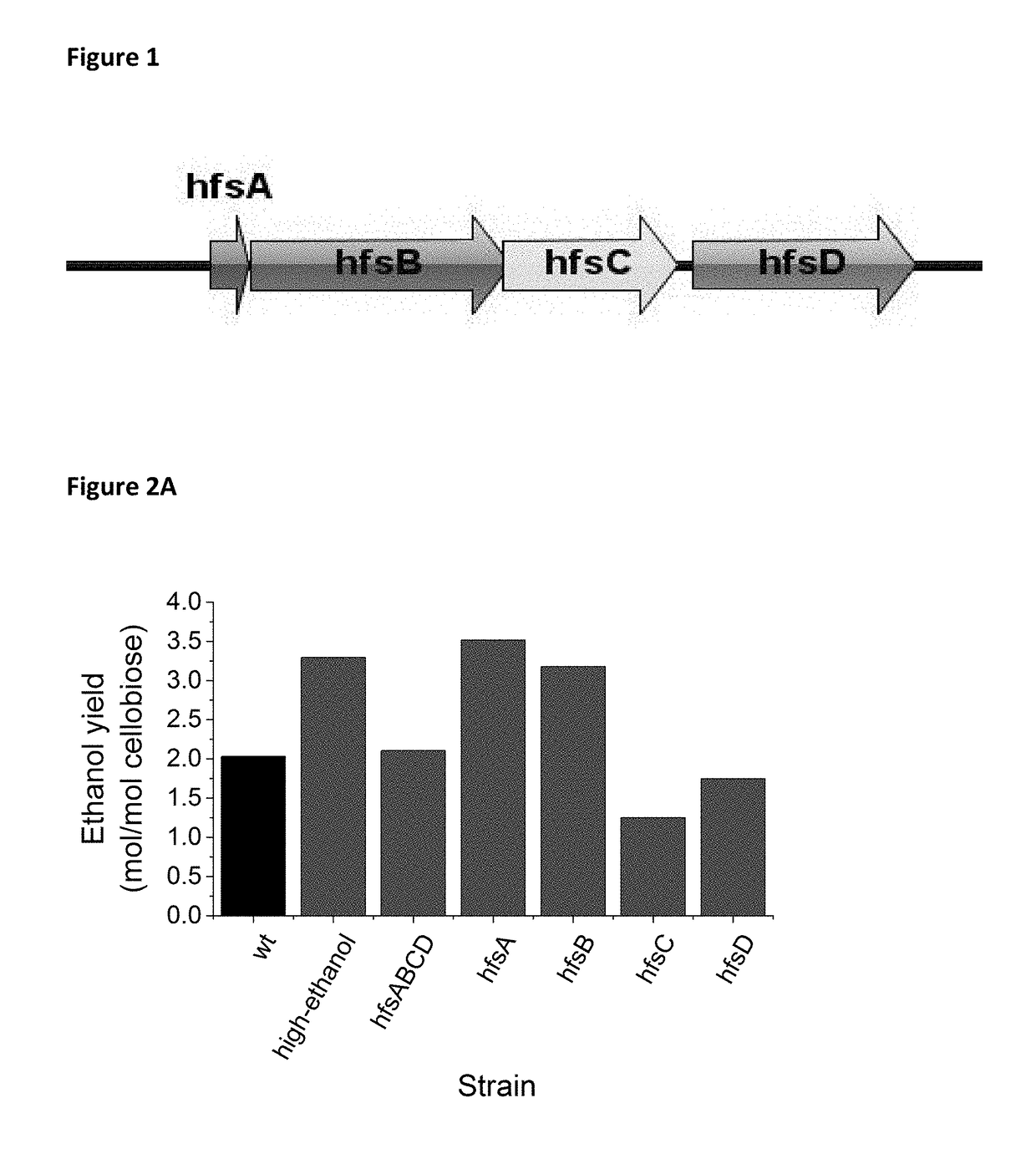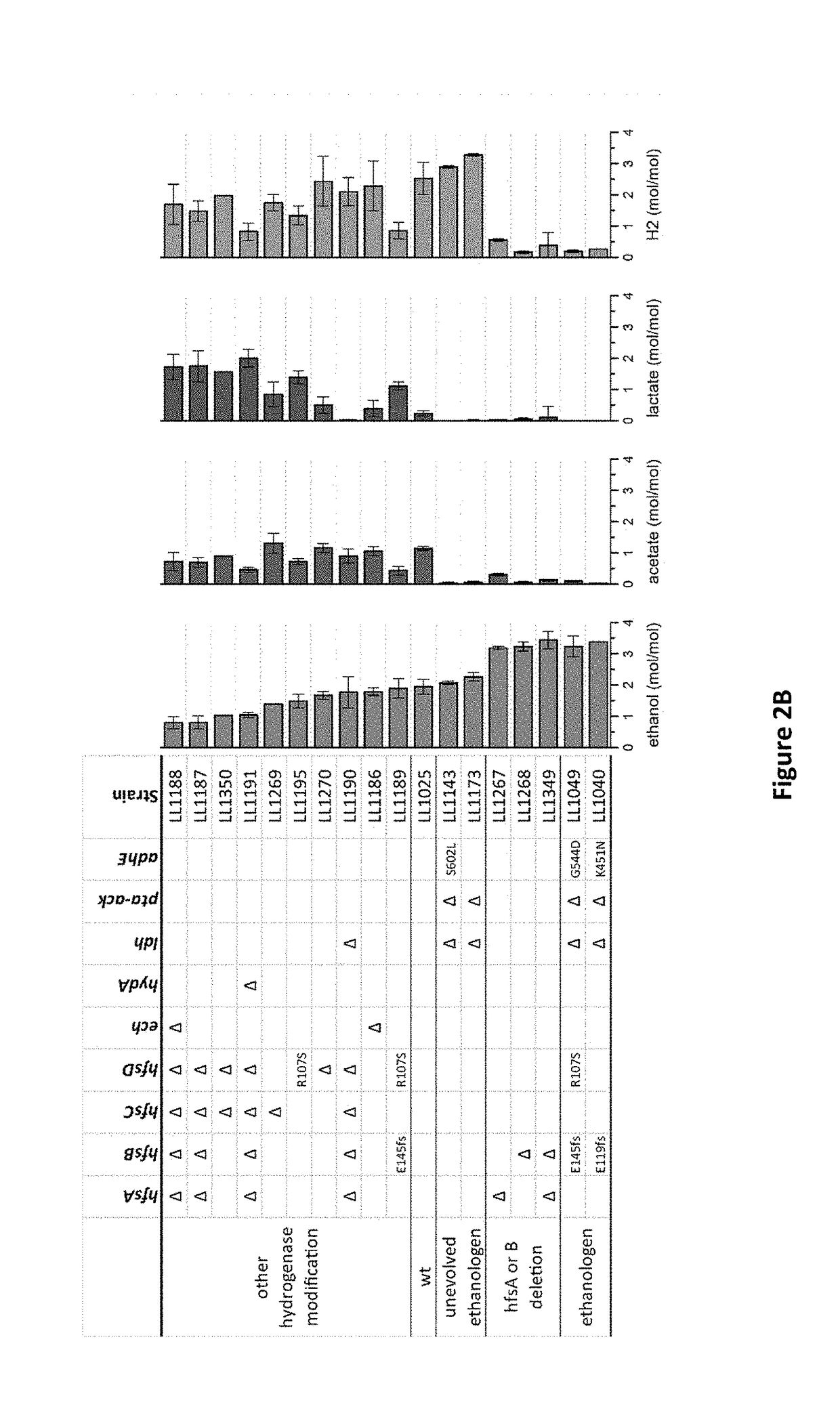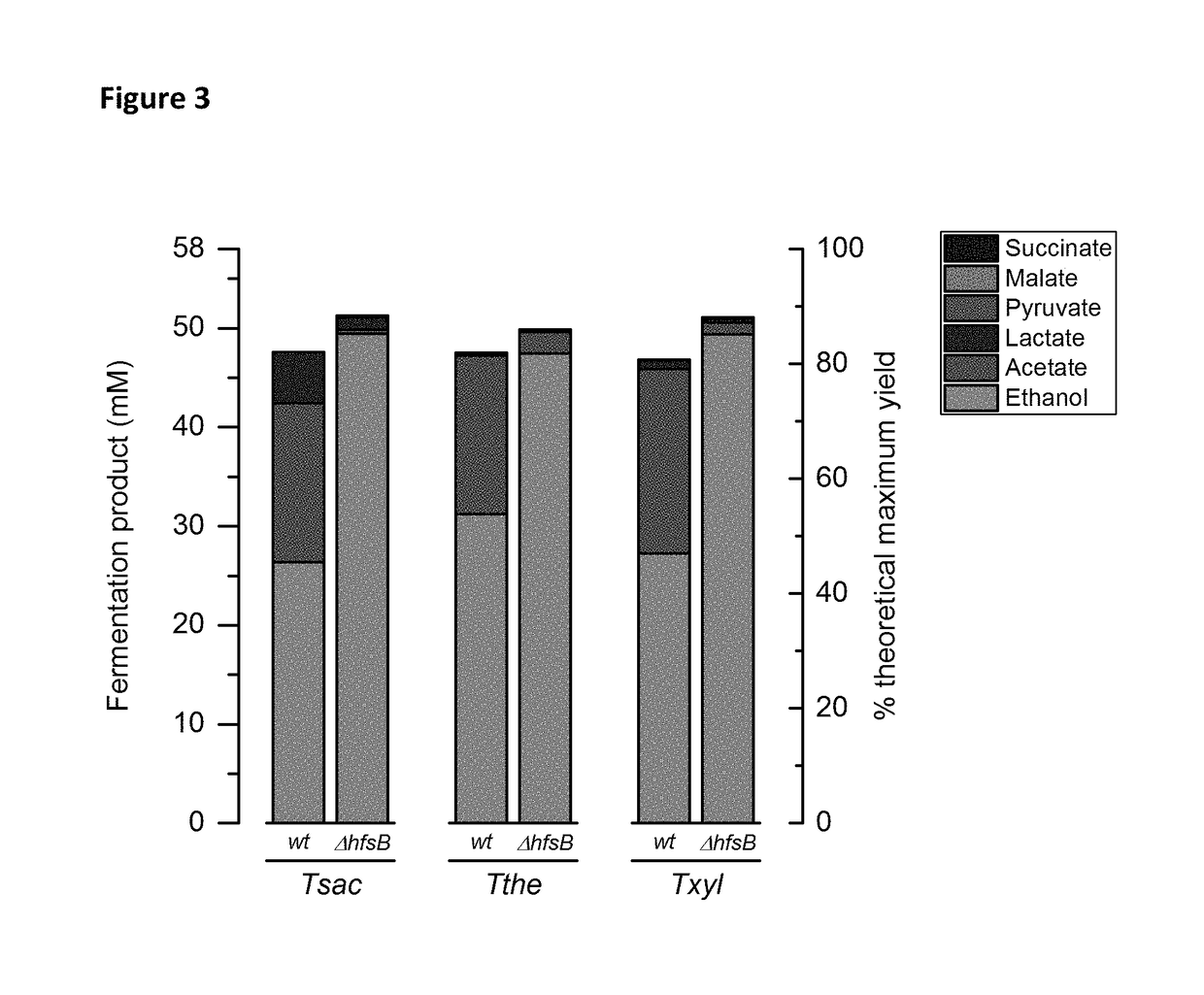Increased ethanol production by thermophilic microorganisms with deletion of individual hfs hydrogenase subunits
a technology of ethanol and microorganisms, which is applied in the field of thermophilic microorganisms with deletion of individual hfs hydrogenase subunits, can solve the problems of each approach's own limitations, and achieve the effects of increasing lactate production, high yield, and increasing ethanol yield
- Summary
- Abstract
- Description
- Claims
- Application Information
AI Technical Summary
Benefits of technology
Problems solved by technology
Method used
Image
Examples
example 3
Deletion of Hfs Subunit in Other Bacterial Species
[0063]To determine if the hfsB regulation system is present in other organisms, hfsB was deleted in Clostridium thermocellum, Thermoanaerobacter mathranii, Thermoanaerobacterium xylanolyticum and Thermoanaerobacterium thermosaccharolyticum (FIG. 6). In all of these organisms, ethanol production increased as a result of the disruption. In C. thermocellum, we made a deletion of the whole hfs operon (Clo1313_1796 to 1793) in addition to the deletion of just the hfsB subunit. In this organism, a pattern similar to that of T. saccharolyticum: deletion of the hfsB subunit alone that improved ethanol production was observed, whereas deletion of the whole hfs operon did not.
[0064]Strains used in this work were re-sequenced to confirm that the genetic modification had been made as intended, to check for possible contamination and to identify the presence of secondary mutations. All strains were correct, no evidence of contamination was found....
PUM
| Property | Measurement | Unit |
|---|---|---|
| volume | aaaaa | aaaaa |
| volume | aaaaa | aaaaa |
| volume | aaaaa | aaaaa |
Abstract
Description
Claims
Application Information
 Login to View More
Login to View More - R&D
- Intellectual Property
- Life Sciences
- Materials
- Tech Scout
- Unparalleled Data Quality
- Higher Quality Content
- 60% Fewer Hallucinations
Browse by: Latest US Patents, China's latest patents, Technical Efficacy Thesaurus, Application Domain, Technology Topic, Popular Technical Reports.
© 2025 PatSnap. All rights reserved.Legal|Privacy policy|Modern Slavery Act Transparency Statement|Sitemap|About US| Contact US: help@patsnap.com



